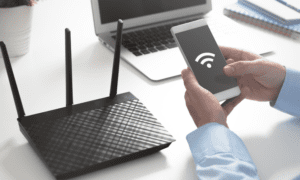Moving to Denmark comes with a mix of excitement and small everyday challenges you don’t really think about beforehand. One of the first things many expats struggle with is choosing a mobile operator. You walk into a shop or browse online, and suddenly you’re looking at Danish terms, unfamiliar plans, and companies you’ve never heard of. I’ve been there myself, standing with a new SIM card in my hand and hoping I picked something that wouldn’t give me headaches later.
The easiest place to get a quick overview is mobileoperator.dk, which lists the major operators side by side. It’s helpful when you’re still figuring out how Danish subscriptions work and what you actually need. But even with a comparison tool, it still helps to understand the main players and what makes each of them different. That’s what this guide is here for—to make the choice easier, clearer, and less confusing.
Why Mobile Operators Matter When You Move to Denmark
When you arrive in Denmark, you quickly notice how much everyday life relies on having a working mobile connection. You need mobile data to access NemID/MitID, pay with MobilePay, use public transport apps, communicate with your workplace, and register for everything from bank accounts to gym memberships. Without a reliable operator, even small things feel harder than they need to be.
I remember constantly checking my data the first weeks, worried it would run out because I didn’t understand how Danish plans worked. But once you choose the right operator, things settle quickly. Most Danish companies offer stable networks, fast speeds, and easy online management. You just need to find the one that fits where you live and how you use your phone.
The Big Players in the Danish Mobile Market
Denmark has several well-established mobile operators, each with its own strengths. The main ones you’ll see are:
Each company has a different style, different coverage strengths, and slightly different pricing. For expats, the most important things to look at are coverage, data packages, contract flexibility, and whether the customer support feels easy to deal with.
Let’s look at the main operators one by one.
TDC / YouSee: Strong Coverage and Stable Network
YouSee sits on the TDC network, the largest and widest mobile network in Denmark. If you want strong coverage across the entire country—including smaller towns, rural areas, and coastal regions—YouSee is often considered the safest choice.
What many expats like is the stability. Whether you’re in Copenhagen, Aarhus, Aalborg, or driving across the countryside, you rarely run into issues with signal strength. YouSee also has a wide range of plans with plenty of data and sometimes extras like streaming add-ons.
The online system can feel a bit formal at first, but once you get used to it, it’s straightforward. If you want a “set it and forget it” experience, this operator fits well.
3 (Tre): Great for Heavy Data Usage
If you’re someone who streams a lot, works online, or uses your phone for hotspotting, 3 is one of the most popular choices. They’re known for offering big data packages and strong 5G availability.
One thing that stands out with 3 is that they often include international roaming options in many of their plans, which is a relief if you travel frequently or want to stay connected when visiting your home country.
The coverage is very good in cities and larger towns, though in deep rural areas the signal may not be as strong as TDC’s network. But for everyday life in Denmark, especially if you live in an urban area, 3 is a very easy choice.
Telia: Good Urban Coverage and Simple Plans
Telia is another strong operator with a solid network across Denmark. Many expats like the simplicity of their plans—clear prices, clean online management, and an app that just works.
Coverage is excellent in cities and suburban areas. Telia’s network is modern, fast, and especially strong if you spend most of your time in and around larger towns.
Another benefit is that Telia often focuses on affordable mid-range plans, which makes it suitable if you need a good balance between price and quality.
Telenor: Easy to Use and Strong in Most Regions
Telenor shares some infrastructure with Telia in Denmark, which means the coverage is very similar. Many users choose Telenor because their customer service is friendly, their plans are simple to understand, and they have a good mix of both budget-friendly and larger packages.
For expats who want stability without diving too deep into details, Telenor works well. If you live in a suburban or urban area, the coverage is generally strong and the speeds are consistent.
Smaller Virtual Operators: Cheap and Surprisingly Good
Besides the major players, Denmark has many smaller providers known as MVNOs—companies that rent network access from the larger operators. They often offer lower prices and flexible contracts, which can be perfect if you want simplicity without paying premium rates.
Examples of these smaller providers include companies that use:
While they rarely include extras like streaming services, they shine when it comes to value. If you’re an expat who doesn’t need huge amounts of data or doesn’t care about brand names, these smaller operators are worth looking into.
What Expats Should Look For Before Choosing a Mobile Operator
Choosing a mobile operator in Denmark is less about the brand and more about how it fits your lifestyle. Here are the things that matter most:
• Coverage where you live
Some operators are better in rural areas, others dominate in cities. Always check a map or ask neighbors which network works best in your neighborhood.
• Data usage
If you work remotely, stream movies, or use your phone for navigation daily, choose a plan with plenty of data—this is where 3 often stands out.
• Contract flexibility
Many Danish operators offer monthly contracts. As an expat, these flexible plans are helpful in case you’re moving or still unsure how long you’ll stay.
• International roaming
If you travel often or visit home frequently, look for plans that include EU roaming without extra fees.
• Customer support experience
When you’re new in the country, having friendly and easy-to-reach support can make a big difference.
• Extra benefits
Streaming services, roaming packages, or family discounts can be useful if you want everything bundled in one place.
How Mobile Subscriptions Work for Expats in Denmark
The Danish system is simple once you understand the basics, but the first time can feel confusing. Most mobile plans work as monthly subscriptions, and payments are usually made through:
If you already have a Danish CPR number and a local bank account, signing up is easy. If you’re still in the process of getting your paperwork sorted, some operators allow prepaid SIM cards as a temporary solution.
One thing that stands out about Denmark is how stable and fast the mobile networks are. Even cheaper operators often offer speeds that feel premium compared to other countries. You’ll also notice that 5G access is widely available—even outside major cities.
Real-Life Scenarios to Help You Choose the Right Operator
Here are some common situations that might help you find your match:
If you live in a rural area
YouSee (TDC network) almost always gives you the strongest coverage.
If you live in Copenhagen, Aarhus, Odense, or Aalborg
3, Telia, and Telenor all perform very well in urban settings.
If you use a lot of mobile data
3 is usually the best match for heavy data users.
If you want a simple, budget-friendly setup
Virtual operators on the TDC or Telia/Telenor network offer great value.
If you want stability above everything else
YouSee is the “safe and steady” option.
If you travel often
Look for operators that include roaming in the base subscription.
If you want the easiest online tools
Telia and Telenor offer clean, modern apps that are great for everyday management.
A Few Practical Tips for Mobile Life in Denmark
Here are some things I wish I knew earlier:



































